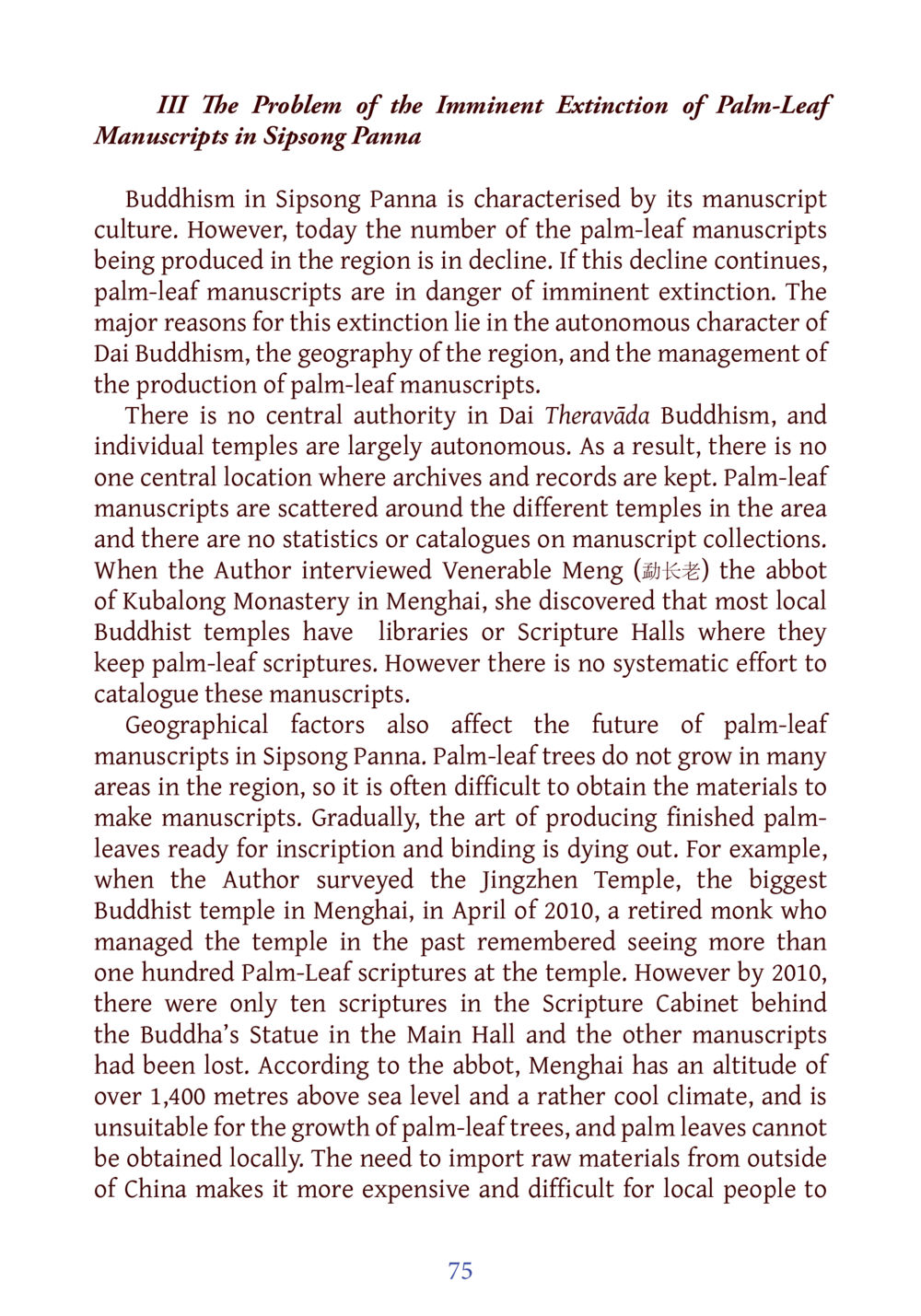The Imminent Extinction of Palm-Leaf Manuscripts in Sipsong Panna : หน้า 96/141
DIRI Journal : หน้า 96/141 Exploring the decline of palm-leaf manuscripts in Sipsong Panna and its cultural implications.
2 ครั้ง

สรุปเนื้อหา
This text discusses the worrying decline of palm-leaf manuscripts in Sipsong Panna, where Buddhist manuscript culture is rich but facing imminent extinction. Key reasons include the autonomous nature of Dai Buddhism, lack of centralized archives, and geographic challenges in sourcing materials. Interviews reveal the absence of cataloging systems, leading to scattered manuscripts in various temples. Furthermore, geographic restrictions hinder the growth of palm-leaf trees, which are essential for creating the manuscripts. The case of Jingzhen Temple illustrates this decline, with an alarming drop in available scriptures over the years. The future of these manuscripts is threatened unless management practices and resource availability improve. For more information, visit dmc.tv.
หัวข้อประเด็น
-Palm-leaf manuscripts
-Dai Buddhism
-Cultural heritage
-Archival challenges
-Geographic influences
-Manuscript preservation
ข้อความต้นฉบับในหน้า
หน้าหนังสือทั้งหมด













































































































































